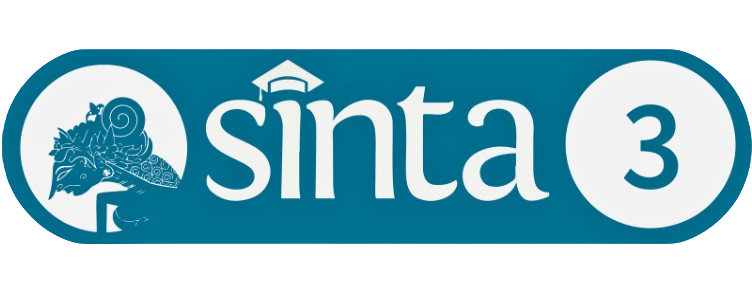Overview of Gen Z Mental Health Screening with SRQ-29
Downloads
Generation Z, as a group born between the mid-1990s and early 2010s, faces complex mental health challenges amidst rapid social, economic and technological changes. This study aimed to explore the mental health characteristics of Generation Z, with the majority of respondents aged 20-21 years old. The instrument used was the SRQ-29. The results showed a high prevalence of post-traumatic stress disorder (57.0%), neurotic symptoms (39.0%), and psychotic symptoms (30.5%), with a very low rate of drug use (0.1%). This suggests that Generation Z was vulnerable to mental health, hence, primary and secondary prevention efforts related to PTSD as well as psychotic and neurotic disorders specific to Gen Z need to be initiated.
Akbar, B., Prawesti, D., & Perbani, W. (2024). Big picture mental health of generation z in the world. Jurnal Kesehatan Komunitas Indonesia, 4(1), 1-20. https://doi.org/10.58545/jkki.v4i1.223
Alanzi, T., Alsalem, A. A., Alzahrani, H., Almudaymigh, N., Alessa, A., Mulla, R., AlQahtani, L., Bajonaid, R., Alharthi, A., Alnahdi, O., & Alanzi, N. (2023). AI-powered mental health virtual assistants acceptance: an empirical study on influencing factors among generations x, y, and z. Cureus. https://doi.org/10.7759/cureus.49486
Azahra, A., Kalfin, K., & Hidayana, R. (2024). Game online dan kesehatan mental generasi z: studi kasus pada remaja pria di smk man 5 tasikmalaya. International Journal of Ethno-Sciences and Education Research, 4(3), 101-105. https://doi.org/10.46336/ijeer.v4i3.712
Bagot, K., Tomko, R., Marshall, A. T., Hermann, J., Cummins, K., Ksinan, A., Kakalis, M., Breslin, F., Lisdahl, K., Mason, M., Redhead, J., Squeglia, L., Thompson, W., Wade, T., Tapert, S., Fuemmeler, B., & Baker, F. (2022). Youth screen use in the ABCD® study. Developmental Cognitive Neuroscience, 57, 101150. https://doi.org/10.1016/j.dcn.2022.101150
Barcelon, E., Abril, P., Alcaraz, M., Tripoli, M., & Autriz, A. (2024). Expressed emotion as moderator between openness to experience and help-seeking attitude towards telepsychology of filipino generation zoomers. Psikoislamika Jurnal Psikologi Dan Psikologi Islam, 21(1), 1-16. https://doi.org/10.18860/psikoislamika.v21i1.26753
Becker‐Haimes, E., Tabachnick, A., Last, B., Stewart, R., Hasan-Granier, A., & Beidas, R. (2019). Evidence base update for brief, free, and accessible youth mental health measures. Journal of Clinical Child & Adolescent Psychology, 49(1), 1-17. https://doi.org/10.1080/15374416.2019.1689824
Macur, M. and Pontes, H. (2021). Internet gaming disorder in adolescence: investigating profiles and associated risk factors. BMC Public Health, 21(1). https://doi.org/10.1186/s12889-021-11394-4
Mutiso, V., Musyimi, C., Tomita, A., Loeffen, L., Burns, J., & Ndetei, D. (2017). Epidemiological patterns of mental disorders and stigma in a community household survey in urban slum and rural settings in Kenya. International Journal of Social Psychiatry, 64(2), 120-129. https://doi.org/10.1177/0020764017748180
Netsereab, T., Kifle, M., Tesfagiorgis, R., Habteab, S., Weldeabzgi, Y., & Tesfamariam, O. (2018). Validation of the who self-reporting questionnaire-20 (srq-20) item in primary health care settings in Eritrea. International Journal of Mental Health Systems, 12(1). https://doi.org/10.1186/s13033-018-0242-y
Newson, J., Hunter, D., & Thiagarajan, T. (2020). The heterogeneity of mental health assessment. Frontiers in Psychiatry, 11, 76. https://doi.org/10.3389/fpsyt.2020.00076
Orth, Z., Moosajee, F., & Wyk, B. (2022). Measuring mental wellness of adolescents: a systematic review of instruments. Frontiers in Psychology, 13, 835601. https://doi.org/10.3389/fpsyg.2022.835601
Park, S., Do, B., Yourell, J., Hermer, J., & Huberty, J. (2024). Digital methods for the spiritual and mental health of generation z: Scoping review. Interactive Journal of Medical Research, 13, e48929. https://doi.org/10.2196/48929
Copyright (c) 2025 Noki Irawan Saputra, Winda Ratna Wulan, Hadi Rahmatsyah, Dedi Nurhasan Ashari, Zesty Virgiandita, Dini Indriany, Andria Pragholapati

This work is licensed under a Creative Commons Attribution 4.0 International License.
BRPKM is a periodical publication with open access to the Creative Commons Attribution 4.0 International (CC-BY 4.0). Therfore, the copyright remains with the author.
With this license, anyone has the right to use the information and to re-distribute the content contained in this journal for any purpose, including commercial purposes. It can be done as long as it fulfills two conditions, namely; (1) you shall provide attribution by citing the original link source, and state if any changes have been made; and (2) you may not use any legal provisions or technological means of control that can legally restrict others from doing the things that are permitted by this license.
Journal editors will not ask the author to approve the transfer of copyright on all published manuscripts.










